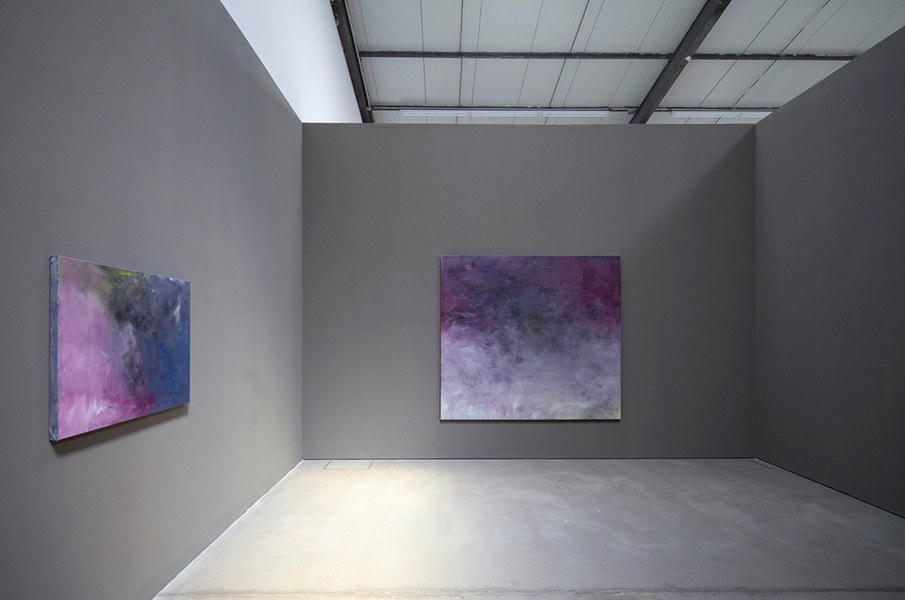Ivan Grubanov – Smokescreens
June 22 - July 28, 2012
Smokescreen, in the original military connotation, refers to a mass of artificial smoke used to conceal soldierly operations from enemies’ line of sight. In a wider context, smokescreen can signify an action or statement used to camouflage, confuse or obscure actual plans, movements or intentions.
Ivan Grubanov’s "Smokescreens" consist of paintings created by means of controlling the effect of smoke on fresh layers of oil paint on canvas. The transforming and elusive effect of smoke and paint produced in a painting is combined with a short text on the wall next to it, a quote. The quote assigns political destinations and aims to the painting, obscuring both its representative and abstract possibilities and driving it to a condition in which the painting embodies its theme. Representation as embodiment has been the crucial premise of Grubanov’s work for over a decade. In his "Evil Painter Principle", a manifest on visual and political representation in the arts (of which smokescreens make a constitutive part), he stresses the relevance of painting as a resistant identity that embodies the intuitive and reflective in society.
The departure point of Grubanov’s "Smokescreens" is the despair over human impossibility to adequately express the urge for transformative - and not merely participatory - action in the social realm. Such is a smokescreen that highlights the act of self-immolation of Mohammed Bouazizi, the trigger of open-ended revolutions in the Arab world since the end of 2010. According to Tunisian psychoanalyst Fethi Benslama, the effect of Bouazizi’s act was to insert into the equation an unknown that upset the calculation: it introduced the possibility of overturning relations, by showing how a man can find a power in his very feeling of impotence, can exist by disappearing, assert his rights in losing everything.
Grubanov’s "Smokescreens" are scenes, images and snatches of speech that constitute the ferment of revolution - protest by a man acting alone and without leaving any other message than his single public act. If a painting can neither carry out any social change nor explain the lack of a just social order, it can express and embody human frustration provoked by the limited possibilities to oppose injustice and oppression. It can embody the actual examples of the culmination of this frustration, by mobilizing imagination, intuition and lucidity in order to signify the unrepresentable and accumulate the imaginary potential toward setting off of the revolt.
Ivan Grubanov (1976, Belgrade) received his education at the Belgrade Academy of Fine Arts, the Rijksakademie in Amsterdam, Delfina Studios in London and Casa de Velazquez in Madrid. He held twenty individual shows and took part in over one hundred group exhibitions at the leading international art institutions and events, including the 10th Istanbul Biennial, National Museum of Contemporary Art Athens, Extra City Antwerp, Stroom Den Haag, MUSAC Leon, Kunsthalle Bern, MOCAK Krakow, Apex Art New York, Witte de With Rotterdam, MAMA Algiers, South London Gallery.
